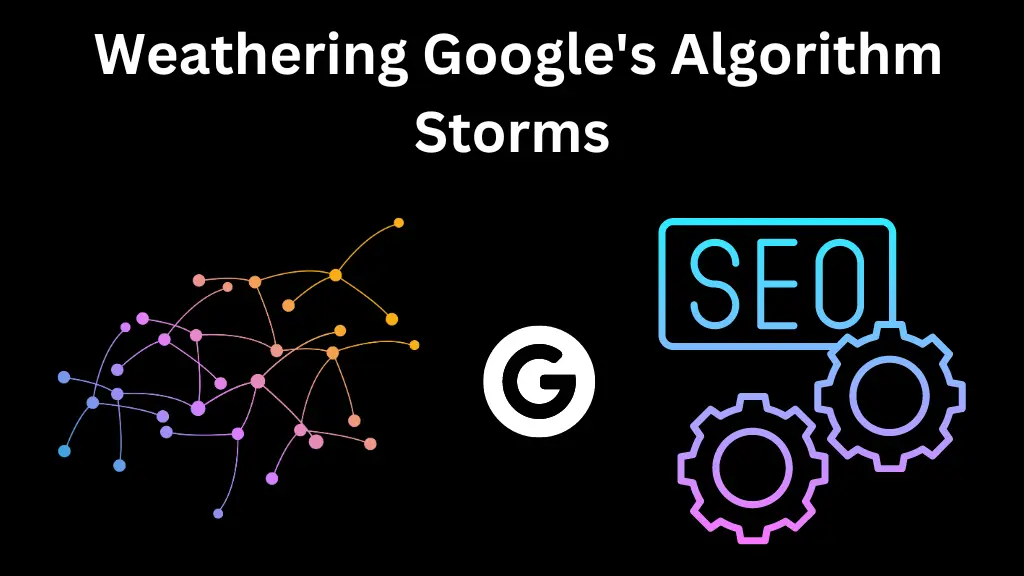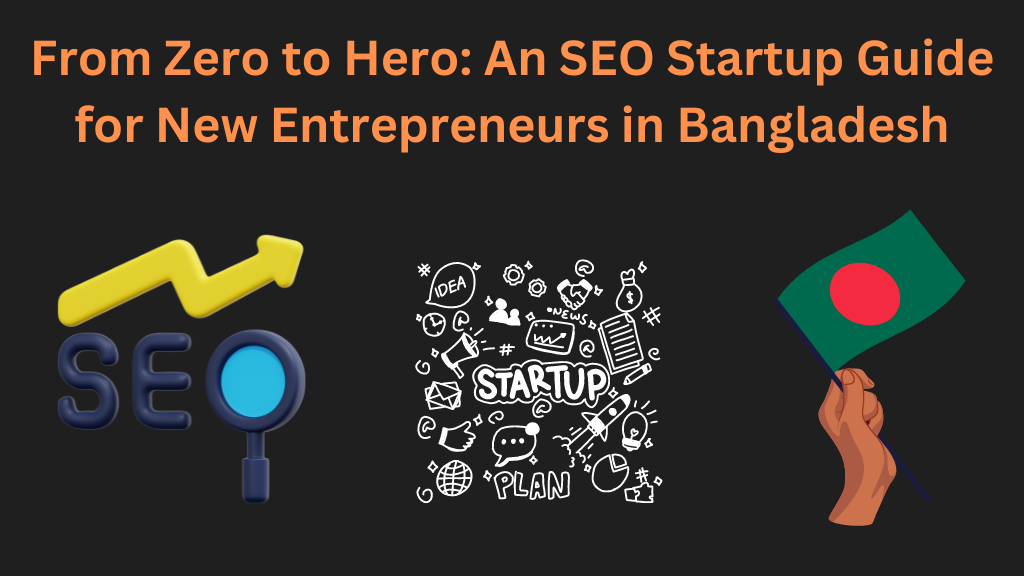Have you ever felt like you’re steering a tiny sailboat through a hurricane of cryptic Google algorithm updates, desperately trying to keep your website afloat in the ever-changing sea of SEO? You’re not alone. Google’s relentless pursuit of delivering the best possible user experience often translates into algorithm updates that can send shockwaves through the SEO world, leaving websites scrambling to adapt or risk getting swept away.
But fear not, brave SEO captain! This guide is your anchor in the storm, packed with actionable strategies to not only survive but thrive through Google’s algorithm tempests. By the end of this journey, you’ll be equipped with a toolkit to navigate the choppy waters with confidence, ensuring your website stays visible and relevant, no matter what Google throws your way.

Table of Contents
ToggleUnderstanding the Storm: Google’s Algorithmic Winds
Before we batten down the hatches, let’s get familiar with the forces at play. Google’s algorithms are complex beasts, constantly evolving to better understand user intent and deliver the most relevant search results. Major updates like Panda, Penguin, and Hummingbird have reshaped the SEO landscape, penalizing low-quality content, spammy link-building practices, and websites that prioritize form over function.
But why all these changes? Google’s goal is simple: to provide users with the best possible search experience. By understanding the intent behind each update, we can anticipate future changes and adjust our SEO sails accordingly.
Staying informed is crucial. Subscribe to Google’s Search Central blog, follow industry experts on social media, and join SEO communities to stay ahead of the curve and understand the “why” behind each update. Remember, knowledge is power, and in the SEO world, it’s the ultimate weapon against algorithm-induced anxiety.
Building a Storm-Proof Vessel: SEO Essentials
Now, let’s talk about your website, the vessel that will carry you through the storm. Before the waves hit, ensure it has a solid foundation:
- Website Health & User Experience: Is your website technically sound? Are loading times fast, mobile-friendliness impeccable, and navigation intuitive? Remember, a clunky website frustrates users and sends negative signals to Google.
- Content as Your Compass: Content is king, and in the SEO world, it’s your compass. Focus on creating high-quality, informative, and engaging content that resonates with your target audience and aligns with search intent. Google rewards websites that offer value and expertise, not just fluff.
- The Right Crew on Board: Make sure your technical SEO is on point. This includes site speed optimization, mobile responsiveness, structured data implementation, and robust security measures. Think of it as having a skilled crew that keeps your ship running smoothly even in rough seas.
By addressing these fundamentals, you’ll create a website that’s not only user-friendly but also speaks Google’s language, making it more resilient to algorithm fluctuations.
When the Storm Hits: Immediate Actions Post-Update
So, the update hits, and your website traffic takes a nosedive. Don’t panic! Here’s how to navigate the immediate aftermath:
- Assess the Damage: Analyze your website analytics to understand the impact of the update. Did specific keywords drop? Is a particular page type affected? Identifying the areas hit hardest helps you prioritize recovery efforts.
- Seek Guidance: The SEO community is your lifeline in stormy weather. Engage with forums, attend webinars, and connect with experts to gather insights and tips specific to the latest update. Remember, you’re not alone in this!
- Don’t Make Rash Decisions: Resist the urge to make knee-jerk reactions like keyword stuffing or buying backlinks. Google penalizes such black-hat tactics, and you’ll end up worse off than before. Stay calm, focus on understanding the update’s intent, and then strategize.
Repairing the Sails: SEO Recovery Strategies
Now, it’s time to roll up your sleeves and make repairs. Here’s how to get your SEO ship back on course:
- Identify Areas for Improvement: Based on your analysis and insights from the community, pinpoint areas where your website falls short of the new algorithm’s criteria. Is your content lacking depth? Is your technical SEO subpar? Be honest and prioritize improvements accordingly.
- Content Revamp: Focus on updating your content to align with the update’s focus. This might involve adding more value, improving readability, or incorporating relevant keywords naturally. Remember, Google rewards content that truly serves the user’s needs.
- Technical SEO Tune-Up: Address any technical SEO issues identified. This could involve optimizing site speed, improving mobile responsiveness, or fixing broken links. Remember, a technically sound website is a happy website (and Google likes happy websites!).
Building Resilience: Preparing for the Next Storm
The good news is, that you can build resilience against future algorithm shifts. Here’s how to chart a course towards calmer seas:
- Embrace Ongoing Content Strategy: Don’t treat content creation as a one-time project. Develop an ongoing strategy that focuses on quality, relevance, and user engagement. Consistently publish fresh, valuable content that aligns with Google’s evolving guidelines.
- Regular Website Audits: Schedule regular website audits to identify and address potential issues before they become major problems. Think of it as preventative maintenance for your SEO ship.
- Diverse Backlink Profile: Build a diverse and natural backlink profile by earning links from high-quality, relevant websites. Avoid black-hat tactics like link buying, as Google can penalize you for them. Remember, quality over quantity is key!
The SEO Forecast: Predicting and Adapting to Future Changes
While predicting the future is impossible, we can stay informed about upcoming trends and potential algorithm shifts. Here’s how:
- Stay Updated: Follow industry publications, attend SEO conferences, and connect with thought leaders. Staying ahead of the curve allows you to anticipate changes and adapt your strategy before they hit.
- Embrace AI & Machine Learning: Understand how AI and machine learning are shaping SEO. Google uses these technologies to understand user intent and content quality better. Adapting your strategy to these advancements can give you a competitive edge.
- Be Adaptable: Remember, the SEO landscape is constantly evolving. The key to success is being adaptable and willing to learn and adjust your strategy as needed. Embrace change, and see it as an opportunity to improve your website and user experience.
Conclusion
Navigating Google’s algorithm storms can be challenging, but with the right knowledge and strategies, you can weather the waves and emerge stronger. Remember, focus on building a solid foundation, creating high-quality content, and staying informed. Embrace continuous learning, adaptability, and a user-centric approach, and you’ll be well on your way to SEO success, no matter what the future holds.
Have you experienced the impact of a Google algorithm update? Share your tips and experiences in the comments below! Let’s help each other navigate the ever-changing world of SEO and build websites that thrive in any storm.





